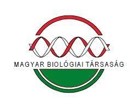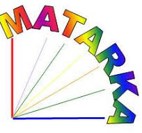Gyomfajok fémakkumulációjának vizsgálata szennyezett területen
Absztrakt
A növényzetnek fontos szerepe van a szennyezett talajok kezelésében. Munkánk során Cr, Cu, Ni, Pb, Sr és Zn fémekkel közepesen és erősen szennyezett területeken fehér libatop (Chenopodium album L.) és kaporlevelű ebszékfű (Tripleurospermum inodorum (L.) Sch. Bip.) egyedek Al, Ba, Ca, Cr, Cu, Fe, K, Mg, Mn, Na, Ni, Pb, Sr és Zn koncentrációját vizsgáltuk a gyökerekben, szárban és levelekben. Tanulmányoztuk továbbá a talajminták és az egyes növényi szervek fémkoncentrációja közötti korrelációt. Megállapítottuk, hogy mindkét faj fémfelvételi képessége mérsékelt volt. A növényi szervek közül a legnagyobb Ca, K, Mg, Mn, Sr és Zn koncentrációt a levelekben találtuk. Emellett korrelációt mutattunk ki a talajok és a növények Al, Ca, Cr Cu, Fe, Mg, Ni, Pb és Sr koncentrációja között. Eredményeink alapján megállapítottuk, hogy a fehér libatop és a kaporlevelű ebszékfű alkalmasak lehetnek a fémszennyezés csökkentésére. Ez elsősorban föld feletti növényi szerveik fémakkumulációja révén valósulhat meg.
Hivatkozások
Applequist, W. l. (2002): A reassessment of the nomenclature of Matricaria L. and Tripleurospermum Sch. Bip. (Asteraceae). – Taxon 51: 757–761. doi: https://doi.org/10.2307/1555032
Armendaríz, M. D. R., Abellan, T. R., Gonzalez-Weller, D., Gonzalez, G. L., Fernandez, A. J. G. & de la Torre, A. H. (2014): Metals (Al, Mn, Sr, Cd and Pb) in phytopharmaceuticals (Matricaria recutita, Tilia officinalis and Salvia officinalis). – Toxicol. Lett. 229: S182. doi: https://doi.org/10.1016/j.toxlet.2014.06.621
Bandiera, M., Dal Cortivo, C., Barion, G., Mosca, G. & Vamerali, T. (2016): Phytoremediation opportunities with alimurgic species in metal-contaminated environments. – Sustainability-Basel. 8: 357. doi: https://doi.org/10.3390/su8040357
Bhargava, A., Shukla, S., Srivastava, J., Singh, N. & Ohri, D. (2008): Chenopodium: a prospective plant for phytoextraction. – Acta Physiol. Plant. 30: 111–120. doi: https://doi.org/10.1007/s11738-007-0097-3
Dousset, S., Morel, J. L., Jacobson, A. & Bitton, G. (2001): Copper binding capacity of root exudates of cultivated plants and associated weeds. – Biol. Fert. Soils. 34: 230–234. doi: https://doi.org/10.1007/s003740100404
Galfati, I., Bilal, E., Béji Sassi, A., Abdallah, H. & Zaïer, A. (2011): Accumulation of heavy metals in native plants growing near the phosphate treatment industry, Tunisia. – Carpath. J. Earth Env. 6: 85–100.
Geneva, M., Markovska, Y., Todorov, I. & Stancheva, I. (2014): Accumulation of Cd, Pb, Zn and antioxidant response in chamomile (Matricaria recutita L.) grown on industrially polluted soil. – Genet. Plant Physiol. 4: 131–139.
Gordon, W. S. & Jackson, R. B. (2000): Nutrient concentrations in fine roots. – Ecology 81: 275–280. doi: https://doi.org/10.1890/0012-9658(2000)081[0275:NCIFR]2.0.CO;2
Grejtovský, A., Markušová, K. & Eliašová, A. (2006): The response of chamomile (Matricaria chamomilla L.) plants to soil zinc supply. – Plant Soil Environ. 52: 1–7.
Gupta, A. K. & Sinha, S. (2007): Phytoextraction capacity of the Chenopodium album L. grown on soil amended with tannery sludge. – Bioresource Technol. 98: 442–446. doi: https://doi.org/10.1016/j.biortech.2006.01.015
Hoefer, C., Santner, J., Puschenreiter, M. & Wenzel, W. W. (2015): Localized metal solubilization in the rhizosphere of Salix smithiana upon sulfur application. – Envir. Sci. Tech. 49: 4522–4529. doi: https://doi.org/10.1021/es505758j
Hu, R., Sun, K., Su, X., Pan, Y. X., Zhang, Y. F. & Wang, X. P. (2012): Physiological responses and tolerance mechanisms to Pb in two xerophils: Salsola passerina Bunge and Chenopodium albumL. – J. Hazard. Mater. 205–206: 131–138. doi: https://doi.org/10.1016/j.jhazmat.2011.12.051
Ishikawa, Y., Sato, S., Kurimoto, Y., Yamada, H., Hayakawa, A. & Hidaka, S. (2014): Preliminary study of phytoremediation and biomass production by Salix species on abandoned farmland polluted with heavy metals. – J. Arid Land Stud. 23–24: 167–172.
Kacálková, L., Tlustoš, P. & Száková, J. (2015): Phytoextraction of risk elements by willow and poplar trees. – Int. J. Phytoremediat. 17: 414–421. doi: https://doi.org/10.1080/15226514.2014.910171
Kay, Q. O. N. (1994): Tripleurospermum inodorum (L.) Schultz Bip. – J. Ecol. 82: 681–697. doi: https://doi.org/10.2307/2261275
Liang, S. X., Gao, N., Li, Z. C., Shen, S. G. & Li, J. (2016): Investigation of correlativity between heavy metals concentration in indigenous plants and combined pollution soils. – J. Chem. Ecol. 32: 872–883. doi: https://doi.org/10.1080/02757540.2016.1203909
Lydakis-Simantiris, N., Skoula, M., Fabian, M. & Naxakis, G. (2012): Cultivation of medicinal and aromatic plants in heavy metal-contaminated soil – Exploitation with caution. 3rd International Conference on Industrial and Hazardous Waste Management, Crete, September 2012.
Mahar, A., Wang, P., Ali, A., Awasthi, M. K., Lahori, A. H., Wang, Q., Li, R. & Zhang, Z. (2016): Challenges and opportunities in the phytoremediation of heavy metals contaminated soils: A review. – Ecotox. Environ. Safe. 126: 111–121. doi: https://doi.org/10.1016/j.ecoenv.2015.12.023
Malik, R. N., Husain, S. Z. & Nazir, I. (2010): Heavy metal contamination and accumulation in soil and wild plant species from industrial area of Islamabad, Pakistan. – Pak. J. Bot. 42: 291–301.
Nouri, J., Khorasani, N., Lorestani, B., Karami, M., Hassani, A. H. & Yousefi, N. (2009): Accumulation of heavy metals in soil and uptake by plant species with phytoremediation potential. – Environ. Earth Sci. 59: 315–323. doi: https://doi.org/10.1007/s12665-009-0028-2
Nwaedozie, G. C., Mohammed, Y., Faruruwa, D. M., Nwaedozie, J. M. & Esekhagbe, R. O. (2015): Evaluation of accumulation ability for Pb, Cr, Ni, and Mn in native plants growing on a contaminated air force shooting range, Kaduna. – Glob. J. Sci. Front. Res. B. 15.
Parisien, M. A., Rutter, A. & Zeeb, B. A. (2015): Feasibility of using phytoextraction to remediate a compost-based soil contaminated with cadmium. – Int. J. Phytoremediat. 17: 1137–1143. doi: https://doi.org/10.1080/15226514.2014.1003792
Samantaray, S., Rout, G. R. & Das, P. (2001): Heavy metal and nutrient concentration in soil and plants growing on a metalliferous chromite minespoil. – Environ. Technol. 22: 1147–1154. doi: https://doi.org/10.1080/09593332208618204
Samatadze, T. E., Amosova, A. V., Suslina, S. N., Zagumennikova, T. N., Mel’nikova, N. V., Bykov, V. A., Zelenin, A. V. & Muravenko, O. V. (2014): Comparative cytogenetic study of the tetraploid Matricaria chamomilla L. and Matricaria inodora L. – Biology Bull. 41: 109–117. doi: https://doi.org/10.1134/S1062359013060125
Sharma, B. & Sharma, K. (2013): Nutrient accumulation in various plant parts of dominant tree species of three different localities. – Pak. J. Biol. Sci. 15–16: 965–968.
Simon, E., Baranyai, E., Braun, M., Cserháti, Cs., Fábián, I. & Tóthmérész, B. (2014): Elemental concentrations in deposited dust on leaves along an urbanization gradient. – Sci. Total Environ. 490: 514–520. doi: https://doi.org/10.1016/j.scitotenv.2014.05.028
Simon, E., Braun, M., Vidic, A., Bogyó, D., Fábián, I. & Tóthmérész, B. (2011): Air pollution assessment based on elemental concentration of leaves tissue and foliage dust along an urbanization gradient in Vienna. – Environ. Pollut. 159: 1229–1233. doi: https://doi.org/10.1016/j.envpol.2011.01.034
Simon, E., Harangi, S., Baranyai, E., Fábián, I. & Tóthmérész, B. (2016): Influence of past industry and urbanization on elemental concentrations in deposited dust and tree leaf tissue. – Urban For. Urban Gree. 20: 12–19. doi: https://doi.org/10.1016/j.ufug.2016.07.017
Simon, E., Vidic, A., Braun, M., Fábián, I. & Tóthmérész, B. (2013): Trace element concentrations in soils along urbanization gradients in the city of Wien, Austria. – Environ. Sci. Pollut. R. 20: 917–924. doi: https://doi.org/10.1007/s11356-012-1091-x
Stanojkovic-Sebic, A., Pivic, R., Josic, D., Dinic, Z. & Stanojkovic, A. (2015): Heavy metals content in selected medicinal plants commonly used as components for herbal formulations. – Tar. Bil. Der. 21: 317–325. doi: https://doi.org/10.1501/Tarimbil_0000001334
Tőzsér, D., Magura, T. & Simon, E. (2017): Heavy metal uptake by plant parts of willow species: A meta-analysis. – J. Hazard. Mater. 336: 101–109. doi: https://doi.org/10.1016/j.jhazmat.2017.03.068
Tőzsér, D., Harangi, S., Baranyai, E., Lakatos, Gy., Fülöp, Z., Tóthmérész, B. & Simon, E. (2018): Phytoextraction with Salix viminalis in a moderately to strongly contaminated area. – Environ. Sci. Pollut. R. 25: 3275–3290. doi: https://doi.org/10.1007/s11356-017-0699-2
Tůma, J., Skalický, M., Tůmová, L., Bláhová, P. & Rosůlková, M. (2004): Potassium, magnesium and calcium content in individual parts of Phaseolus vulgaris L. plant as related to potassium and magnesium nutrition. – Plant Soil Environ. 50: 18–26.
Vangronsveld, J., Herzig, R., Weyens, N., Boulet, J., Adriaensen, K., Ruttens, A., Thewys, T., Vassilev, A., Meers, E., Nehnevajova, E., van der Lelie, D. & Mench, M. (2009): Phytoremediation of contaminated soils and groundwater: lessons from the field. – Environ. Sci. Pollut. R. 16: 765–794. doi: https://doi.org/10.1007/s11356-009-0213-6
Yoon, J., Cao, X., Zhou, X. & Ma, L. Q. (2006): Accumulation of Pb, Cu, and Zn in native plants growing on a contaminated Florida site. – Sci. Total Environ. 368: 456–464. doi: https://doi.org/10.1016/j.scitotenv.2006.01.016
Zimmer, D., Baum, C., Leinweber, P., Hrynkiewicz, K. & Meissner, R. (2009): Associated bacteria increase the phytoextraction of cadmium and zinc from a metal-contaminated soil by mycorrhizal willows. – Int. J. Phytoremediat. 11: 200–213. doi: https://doi.org/10.1080/15226510802378483






